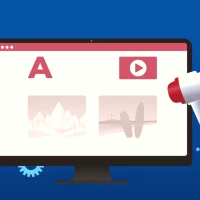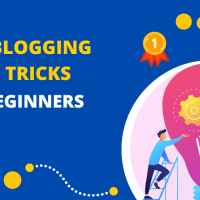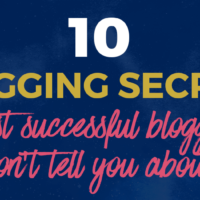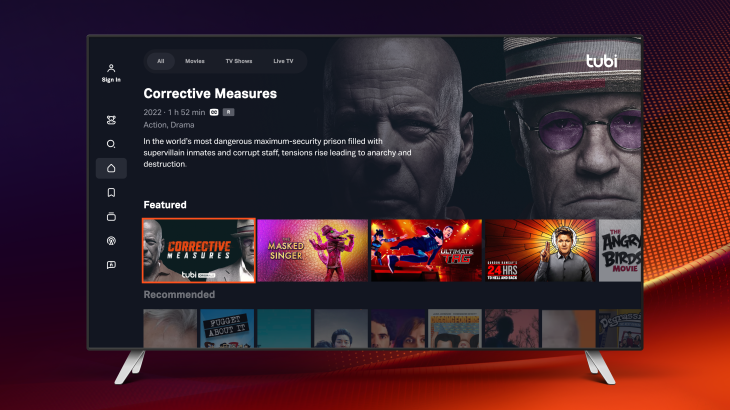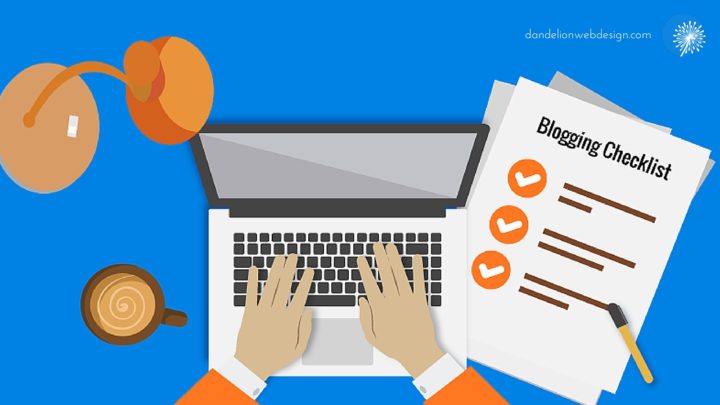Understanding the Basics of Blogging
Blogging is essentially an online journal or information hub where one can share their thoughts, knowledge, and experiences. It provides a platform for writers, influencers, institutions, and businesses to voice their opinions, share insights, and create a dialogue with their audience. Blogs are typically updated regularly and can consist of content related to any topic, be it fashion, technology, education, finance, or lifestyle. The content can take a myriad of forms – written words, images, videos, infographics, podcasts, and more.
The genesis of a blog starts with content creation. It’s paramount to maintain originality, authenticity, and relevance in the content you share. This can help attract and engage readers. Regular updates and fresh content not only help keep your readers captivated but also improve your visibility in online searches. A blog doesn’t necessarily need to be formal; in fact, one of the major allures is the personalized touch it often offers. Privacy can be maintained, and anonymous blogs are prevalent. Be it casual followers, passionate hobbyists, seasoned professionals, or established corporations, blogging is a flexible and inclusive way of communicating and sharing knowledge online.
Creating a Robust Content Strategy
Content strategy is vital for the success of any blog endeavor. It’s not enough to merely churn out content; it needs to be well-thought-out, purposeful and aimed at the target audience. This includes understanding what topics will resonate with your readers, the ideal frequency of your blog posts, and the right balance of evergreen and timely content. The cornerstone of a strong content strategy is understanding your audience’s needs and crafting content that provides them with real value.
In addition, planning ahead is crucial. A content calendar can be a blogger’s best friend, helping to organize and schedule blog posts in advance. This not only ensures regular content output, but also allows time to research and create high quality posts. Emphasizing quality over quantity can give your blog an edge, making it more likely that your audience will engage with your posts and come back for more. Writers should remember to always keep authenticity and their audience’s interests at the core of their content strategy.
Deciding on Your Blog’s Niche
Identifying the right niche for your blog plays an integral role in its overall success. Underlining your blog’s specific focus area not only captures the interest of a concentrated audience but also differentiates your content from a vast amount of generalized information available on the internet. Your selected niche should be a reflection of your knowledge, passion, and understanding, which can be communicated effectively to your readers. It’s essential to choose a niche that resonates with you, as this will stimulate consistency in creating quality content and foster an authentic connection with your audience.
Doing extensive research on potential blog niches will pay huge dividends down the line. Analyzing the competition within your chosen niche can provide useful insights to gauge its profitability, trend dynamics, and existing content gaps. Potential readership, blog monetization opportunities, and keyword traffic are also crucial elements to be considered while defining your blog’s niche. This strategic decision not only shapes your blog’s identity and purpose but also directs your future content strategy and blogging aspirations.
Selecting the Right Blogging Platform
The right blogging platform can mean the difference between a flourishing online presence and a digital ghost town. Your chosen blogging platform will serve as the foundation of your blog, housing all your content and attracting readers. You need to choose a blogging platform that suits not only your technical prowess but also your long-term blog goals.
There are countless blogging platforms available, from the simplicity of WordPress, known for its user-friendly interface and thousands of free templates, to the more complex and customizable Drupal. Other versatile platforms such as Joomla offer diverse features and vast libraries of plug-ins to custom-fit your blogging experience. The key is to grasp the balance between user-friendliness and a fully customizable blogging platform fitting to your needs and the nature of your blog’s content. Understanding your audience and your content goals will help guide you in making the best choice.
Designing Your Blog for User Convenience
To ensure a seamless interaction for your readers with your blog, the emphasis on impeccable design is imperative. Good design transcends purely aesthetic elements and dives into the realm of user experience. The purpose here is twofold; to make your blog visually appealing and to make navigation intuitive and effortless. These two core elements work hand in hand to retain users by keeping them engaged and interested.
Do not overlook the fonts and color schemes, as they play significant roles in readability and overall visual impact. A clean, uncluttered layout with well-organized content fosters an environment where users can explore at their pace. Furthermore, mindful consideration should be given to elements like loading times and mobile responsiveness. This caters to users of various devices and internet speeds, ensuring a wide reach and inclusive audience engagement.
Implementing SEO Strategies for Your Blog
Search Engine Optimization (SEO) plays a pivotal role in expanding the visibility of your blog in organic search results. Various strategies can be adopted to improve your blog’s SEO, but the linchpin lies in understanding the way search algorithms work and incorporating them effectively. Fresh, engaging, and high-quality content is the cornerstone of good SEO. When creating your blog content, it is indispensable to include relevant keywords seamlessly, as they are the key elements that search engines look for. To increase the readability of your blogs, use headings and subheadings wisely. H1, H2, and H3 tags not only aid in organizing your content but also engender a positive impact on your blog’s SEO.
On-page SEO tactics are closely linked with user experience and the browsability of your blog. Therefore, it’s also imperative to focus on the technicalities such as URL structure, mobile optimization, and website loading speed. Make your URLs short, concise, and meaningful as they help in predicting the page content. The Google algorithm favors mobile-optimized and speedy websites, establishing them in higher search rankings. Besides content and user experience, building quality inbound links is another effective strategy. Sourcing backlinks from high-authority sites will enhance your blog’s trustworthiness, thereby improving its rank. Overall, implementing SEO strategies for your blog demands constant learning and adaptability to the dynamic nature of search engine algorithms.
Promoting Your Blog Through Social Media
In the digital age, social media platforms have become incredibly powerful tools in spreading content and reaching wider audiences. They are interactive, engaging, and intuitive, with billions of active users daily. With these platforms, the reach and potential of your blog turn limitless. Hence, learning to utilize them effectively provides you an edge in promoting your blog, thus boosting visibility and attracting more readers.
The first step involves identifying the social media platforms that your target audience frequently uses. The most common ones include Facebook, Instagram, Twitter, LinkedIn, and Pinterest. Tailoring your promotional strategies according to each platform’s distinct characteristics and audience behavior is essential. For instance, mindfully use hashtags on Instagram and Twitter, create compelling visuals for Pinterest, and network professionally on LinkedIn. Furthermore, regular updates, interactive posts, and community engagements are beneficial strategies in organically growing your online presence. Remember, the key to social media promotion lies in understanding your audience and delivering content that resonates with them.
Monetizing Your Blog Content
Turning your blog into a source of income can be a rewarding, but challenging, process. Amidst the myriad of monetization strategies available, one must carefully decide which method aligns best with their blog content and audience. There is no one-size-fits-all approach to this; it requires a firm understanding of your reader demographics, their online behavior, and keeping abreast with the latest monetization trends.
Affiliate marketing, sponsored content, subscriptions, and selling merchandise are among the few strategies known to generate income. Affiliate marketing involves promoting a product or service from another company and earning a cut from any sales made through your promotional link. Sponsored content is when a brand pays the blogger to create a post specifically about its product or service. Paywalls and subscriptions offer exclusive content to readers in exchange for a fee, while merchandising pertains to selling goods related to the blog’s niche. All these methods come with their own set of pros and cons, and a wise blogger knows to choose the one that best enhances the blog’s value while driving revenue.
Maintaining Consistency in Blogging
The success of a blog hinges largely on the constancy of its content, an aspect often overlooked by many novice bloggers. This does not simply mean posting on a regular schedule, but rather refers to the consistency of the blog’s theme, voice, and quality. Each blog post needs to exude a similar energy and level of understanding so your audience knows what to anticipate with each new entry. Consistency in these areas helps build a stronger connection between you and your readers, as they feel more acquainted and comfortable with a familiar writing style and content structure.
Just like any reputable publication, blogs require a steady stream of topics and ideas expressed in a similar vein. Consistency manifests itself in various ways – your chosen time of posting, frequency of posts, writing tone, or topic continuity. This aligns with the expectations of your audience, leading them to revisit your blog with the anticipation of familiar conveyance of new information. The key is to find a balance that fits both you as the creator and the demands of your readers, to foster a mutual enthusiasm for the continuous consumption and creation of content.
Measuring Your Blog’s Success Through Analytics
Understanding your blog’s success and its resonating effect in a digital landscape can be a challenging task. However, employing appropriate analytical tools can significantly simplify this process. Web analytics tools provide you with detailed reports and insights regarding the traffic, user demographics, bounce rates, session durations, and much more about your blog. Thus, it acts as a graduated scale, showcasing the progress and areas of improvement for your blog’s visibility in the digital space.
Furthermore, proper use of these analytics goes beyond just simple number crunching. It’s about interpreting these numbers, understanding patterns, and unveiling the hidden narratives behind them. By cleverly interpreting data, bloggers can understand what works for them – type of content, engaging headlines, best time to publish posts, and so forth. Analytics indeed becomes the central nerve system driving the blog’s strategic development and assisting in well-informed decision-making processes. However, one must remember, analytics is only as useful as the interpretation and the subsequent action taken on its basis.





